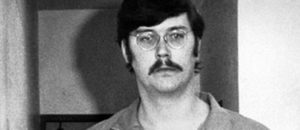Peter Manuel – Scotland
Peter Thomas Anthony Manuel (13 March 1927 – 11 July 1958) was an American‑born Scottish serial killer active in the mid‑1950s, convicted of seven murders and suspected in additional killings across Lanarkshire and southern Scotland. His crimes, arrest in January 1958 and execution later that year made him one of the most notorious criminal figures in postwar Scottish history.
Key Facts
- Manuel was convicted of seven murders and is believed to have been responsible for up to nine killings in total.
- The unidentified assailant had been dubbed “the Beast of Birkenshaw” by the contemporary press.
- He was arrested in January 1958 after investigators linked him to multiple scenes and suspicious behaviour.
- Manuel was tried in 1958 and subsequently sentenced to death; he was executed at Barlinnie Prison in July 1958.
- His execution made him one of the last people to die on the gallows at Glasgow’s Barlinnie.
- Victims were killed by a mix of methods including shooting, strangulation, rape and bludgeoning.
- The murders took place mainly between 1956 and early 1958 across Lanarkshire, Glasgow suburbs and nearby regions.
- Some crimes occurred outside Scotland, notably a killing in Northumberland that was attributed to him after his death.
- He had an existing record for theft and burglary and was on bail for a burglary when several murders occurred.
- Questions about police handling, mistaken identifications and a near‑miscarriage of justice involving another suspect have persisted in accounts of the case.
Crimes and Victims
Manuel’s known victims included teenagers and adults; attacks ranged from a brutal bludgeoning and sexual assault to shootings in family homes. Notable cases include the killing of a young woman at a golf course, the slaying of a mother, her daughter and sister in a Glasgow house, and the murder of a family in Uddingston.
In several incidents he combined sexual violence with lethal force, and at least one victim was buried locally after being strangled. After the Uddingston family murders he remained in the victims’ home for days, later taking banknotes and removing the family car.
A murder in Northumberland of a taxi driver was later attributed to Manuel by a coroner’s jury following his execution, though he was not tried for that killing due to jurisdictional limits. Investigators also linked him to disappearances and murders that were not immediately connected until patterns emerged during the manhunt.
Capture and Trial
Police arrested Manuel in January 1958 after accumulating evidence tying him to multiple crime scenes and inconsistencies in his account of movements. He was charged with a series of murders and brought to trial that same year.
At trial the prosecution presented a range of forensic links, witness identifications and circumstantial material; one charge was subsequently dropped for lack of evidence. Manuel was convicted on several counts, sentenced to death and executed in July 1958; the separate English jurisdiction case was not tried but later attributed to him by a coroner’s finding.
The prosecution’s case also highlighted investigative difficulties of the period, including flawed eyewitness identifications and a period during which another suspect was detained on strong but ultimately unproven circumstantial grounds. Those issues have been examined in later reviews and media accounts as examples of the challenges faced by mid‑20th century criminal investigations.
Psychology and Motives
Assessments of Manuel’s motives have emphasized a mixture of sexual violence, opportunism and material gain rather than a single, easily defined rationale. He combined sexual assault with theft in some incidents, and in other cases the violence appeared gratuitous and personal.
Contemporaneous observers and later commentators have described him as manipulative and remorseless, noting behaviour such as remaining in a victim household after the crime and misleading investigators. Formal psychiatric profiling was limited at the time, so much analysis of his psychology has come from case studies, witness testimony and the pattern of offences rather than detailed clinical records.
Background / Early Life
Born in 1927 in the United States, Manuel was raised in Scotland and developed a record of petty crime and burglaries before the murders began. He had been out on bail for a burglary at a local colliery when several of the more serious killings occurred.
Details of his upbringing and formative years have been used to contextualize his later offending but do not provide a straightforward explanation for his escalation to murder. Histories of the case note a mixture of instability, criminal activity and personal relationships that framed his adult life prior to arrest.
Legacy and Media Coverage
The Manuel case attracted intense press attention at the time and has remained a subject of books, documentaries and true‑crime studies in Scotland and beyond. Coverage has focused both on the brutality of the offences and on investigative controversies, including mistaken identifications and the near‑detention of another man who might have faced wrongful capital punishment.
His execution at Barlinnie and the later attribution of an English murder to him have kept the case in discussions about policing, forensic evidence and capital punishment in the postwar United Kingdom. Contemporary media portrayals frequently referenced the press sobriquet “the Beast of Birkenshaw,” and the case continues to be cited in analyses of mid‑20th century criminal justice in Scotland.







